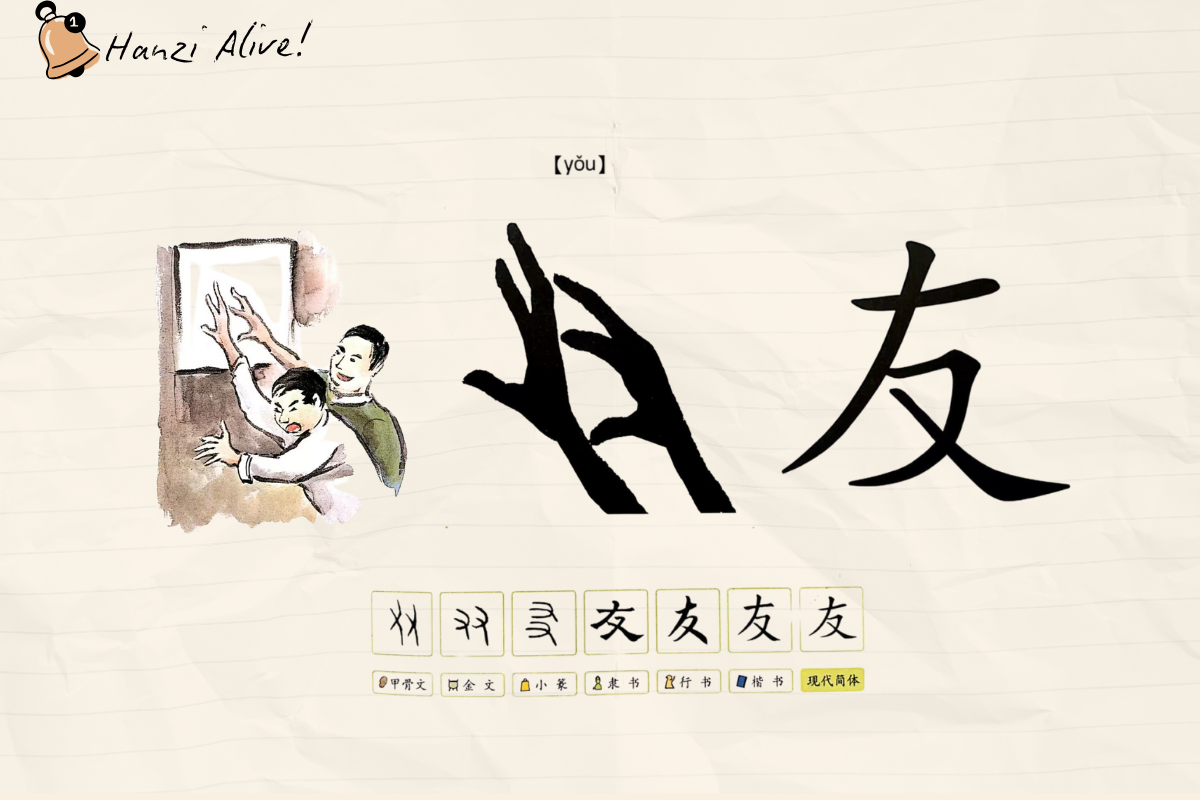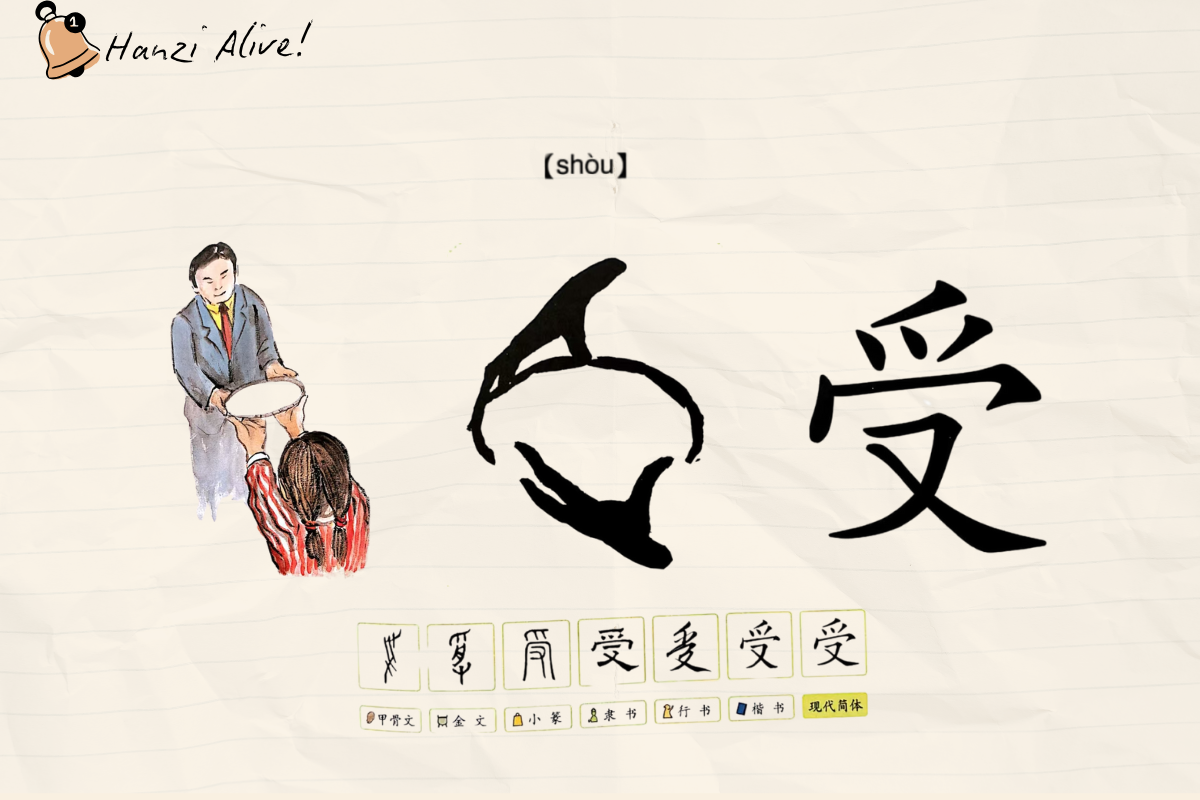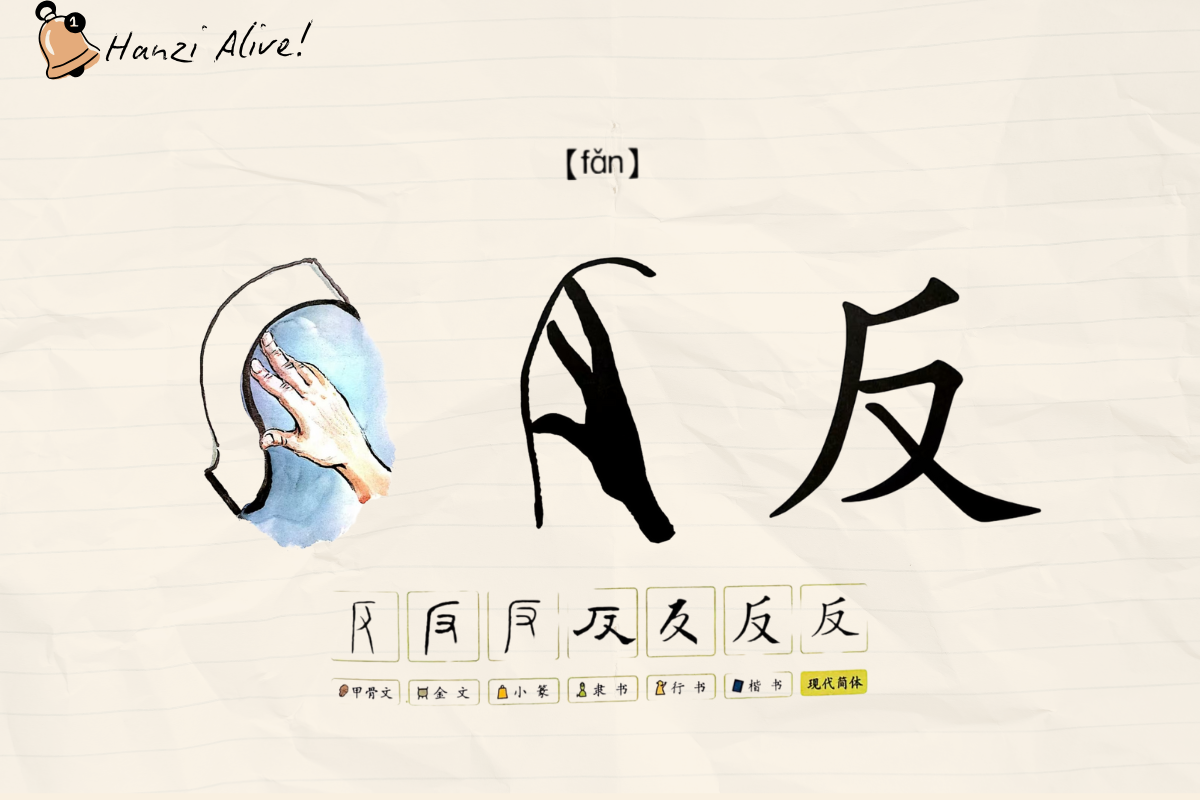Hanzi Alive!(7)
The Hand Code in Chinese characters: '手(shǒu)' is five open fingers, '友(yǒu)' is hands clasped together, '受(shòu)' is about giving and receiving, and '反(fǎn)' is a flipped palm. These four characters, with the same radical, reveal the philosophy of interaction between people.
手(shǒu)
Explanation:
- "手(shǒu)" is a pictographic representation of a hand with five fingers. It has two written forms: "手" as a radical to create other characters and "手" on its own meaning "hand."
Example:
- I write with my hand.
我用手写字。
Wǒ yòng shǒu xiě zì. - Her hand is very clean.
她的手很干净。
Tā de shǒu hěn gān jìng.
Find and circle "手" in the image:

友(yǒu)
Explanation:
- The simplified form of "手(yǒu)" can be written as "u". Two hands together in the same direction symbolize one hand working while the other helps, forming the character "友" meaning "friend."
Example:
- He is my good friend.
他是我的好朋友。
Tā shì wǒ de hǎo péng yǒu. - Friendship is very important.
友谊很重要。
Yǒu yì hěn zhòng yào.
Find and circle"友" in the image:
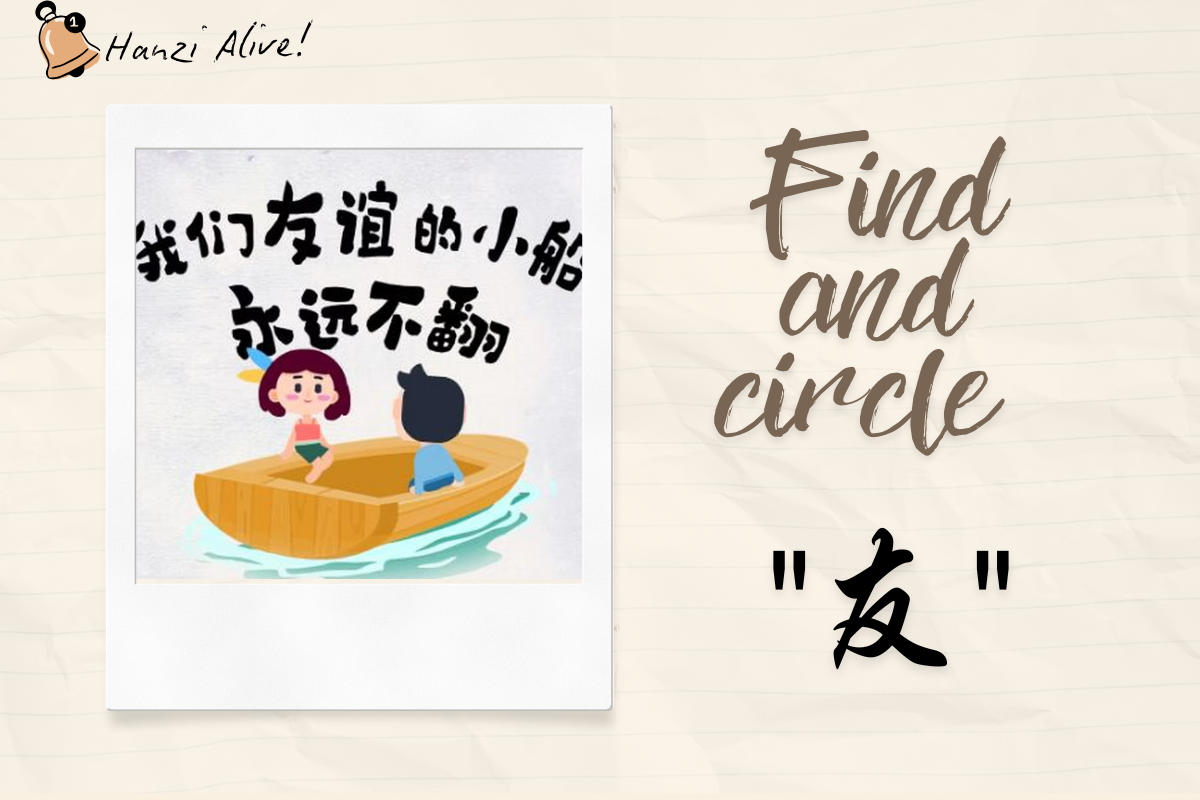
受(shòu)
Explanation:
- A hand receiving a plate-like object signifies,"受(shòu)", meaning "to receive."
Example:
- He got injured.
他受伤了。
Tā shòu shāng le. - She is very popular.
她很受欢迎。
Tā hěn shòu huān yíng.
Find and circle "受" in the image:
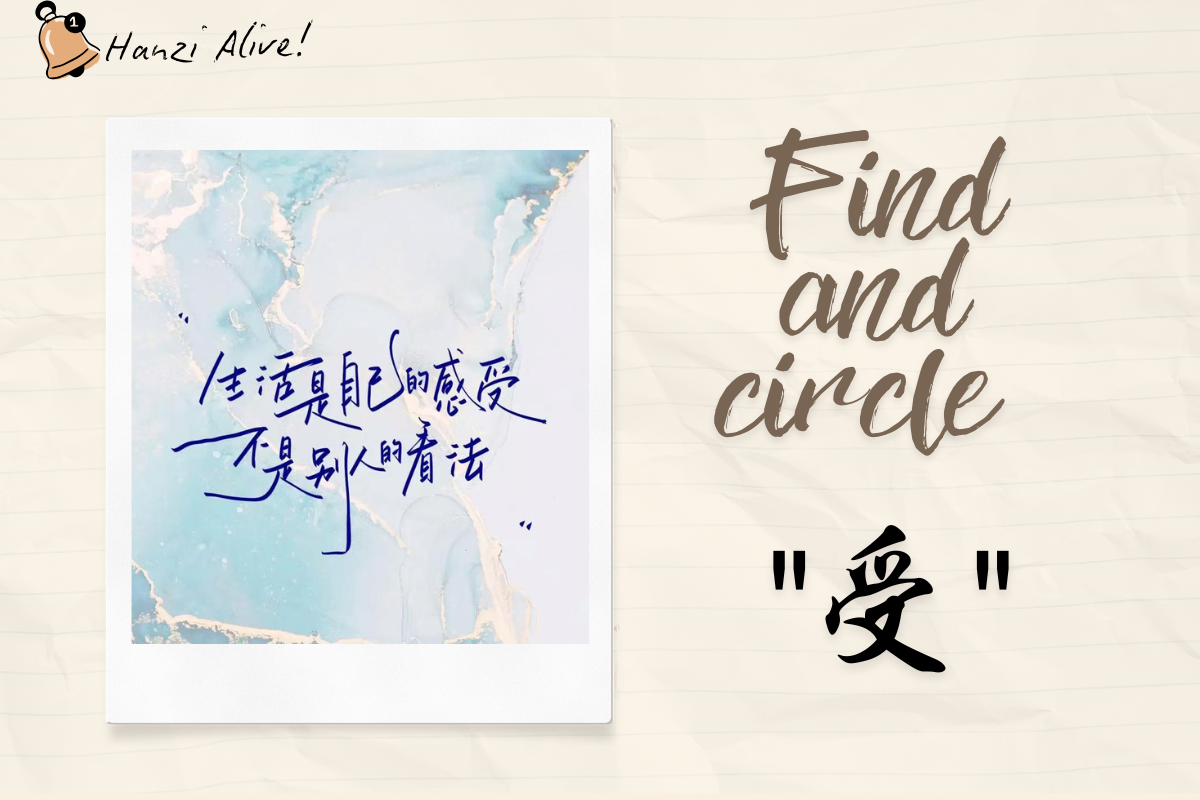
反(fǎn)
Explanation:
- A wavy line in front of a hand indicates the hand is turning something over, which is represented by "反(fǎn)" ."反(fǎn)" can mean "to disobey," "to disagree," or "to go against."
Example:
- He is saying the opposite.
他说的是反话。
Tā shuō de shì fǎn huà. - Don’t oppose the teacher.
不要反对老师。
Bú yào fǎn duì lǎo shī.
Find and circle "反" in the image:
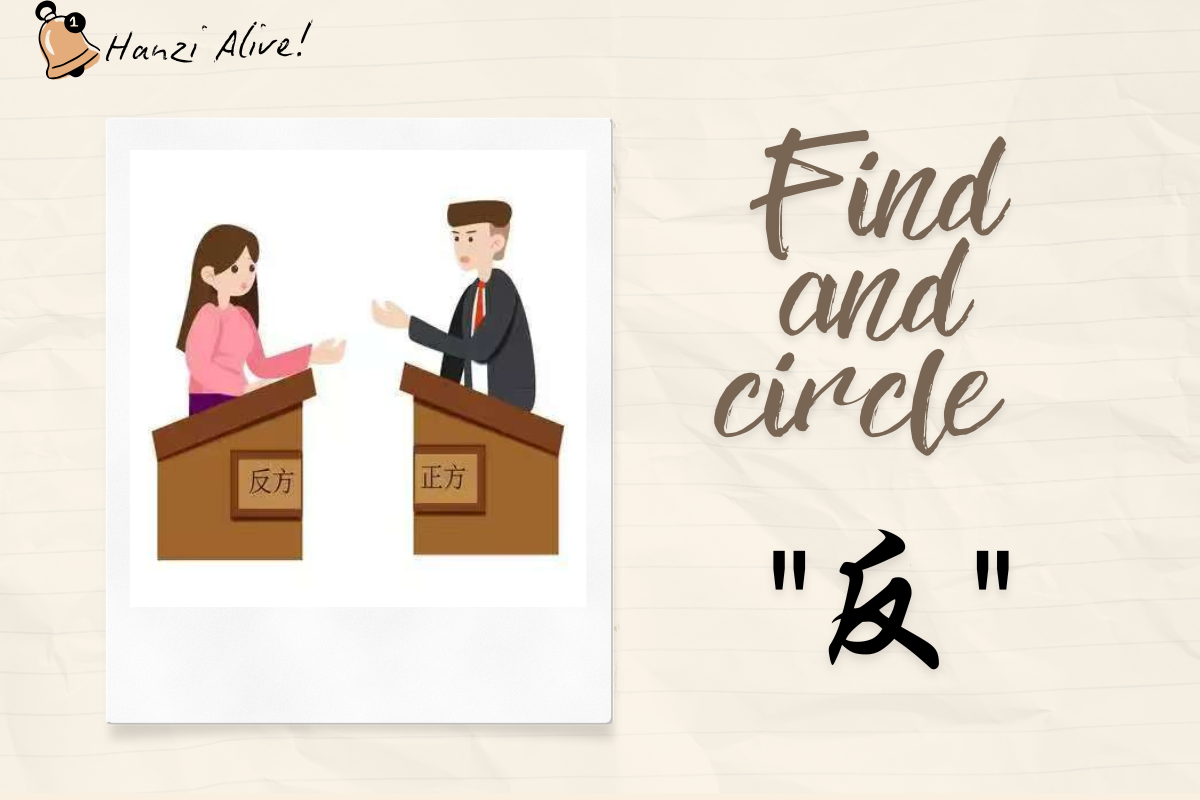
Now, when you write characters with the radical '手', remember: it can represent the warmth of friendship ('友'), the joy of giving ('受'), or the courage to change ('反'). The most beautiful secret in Chinese characters - components have their own language.

